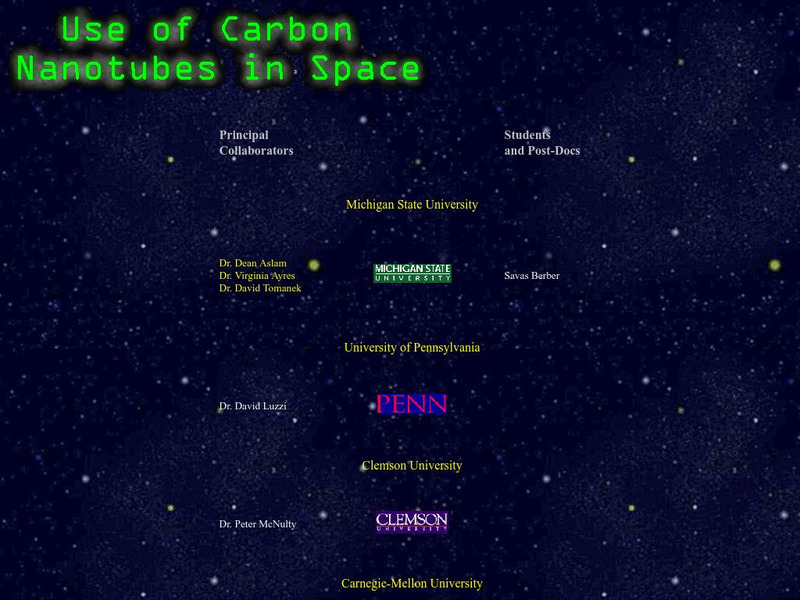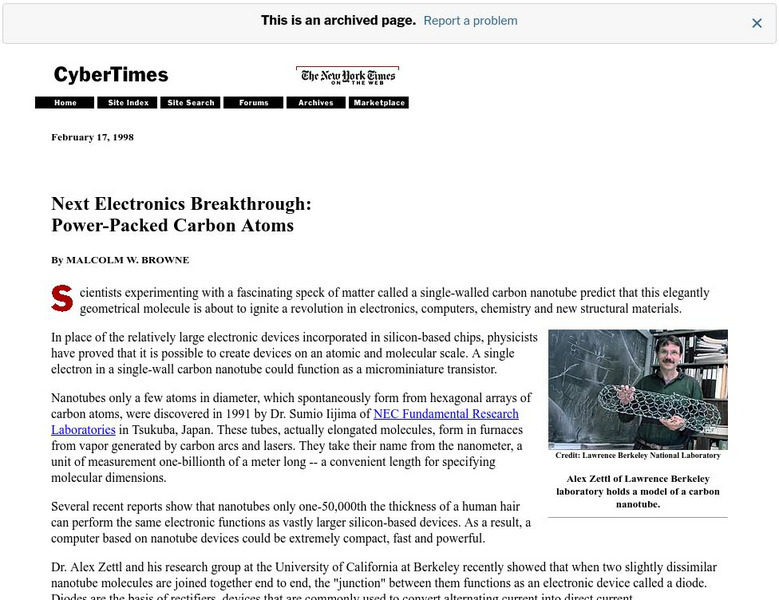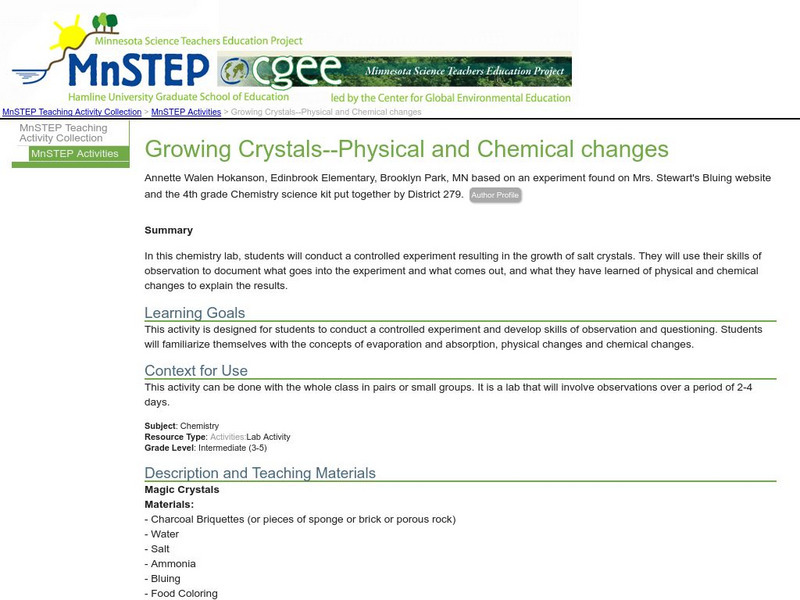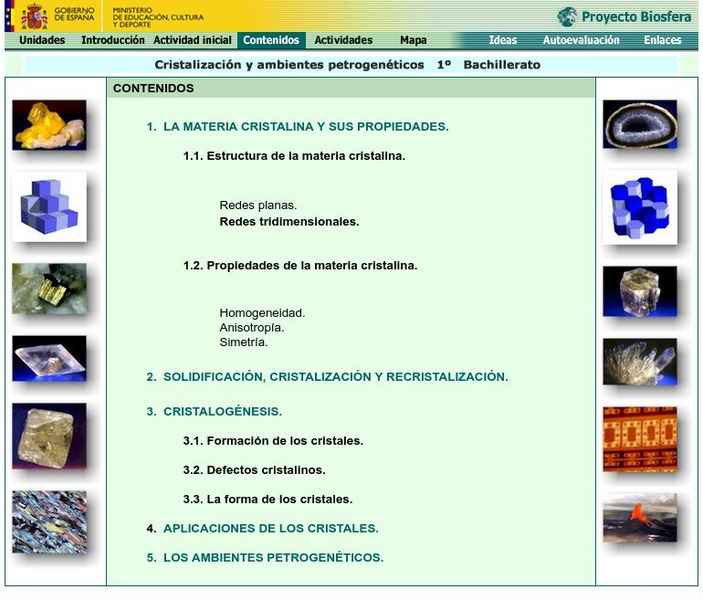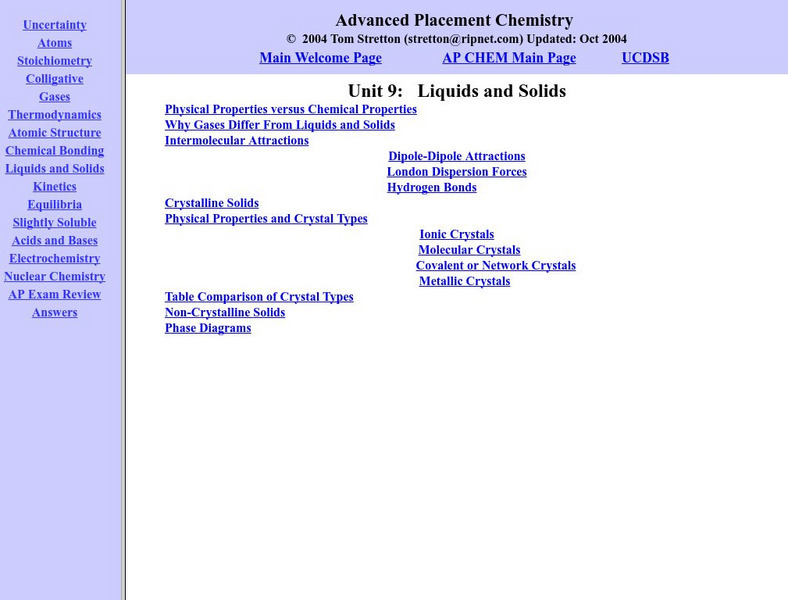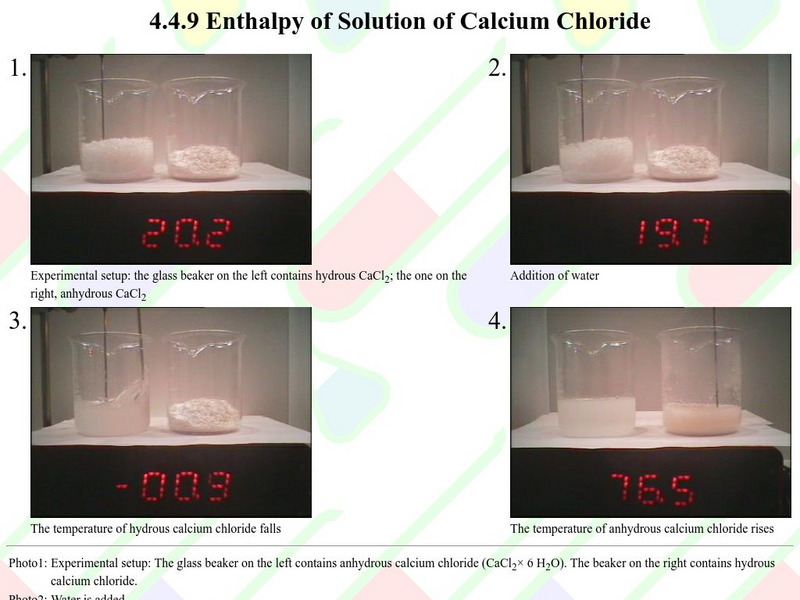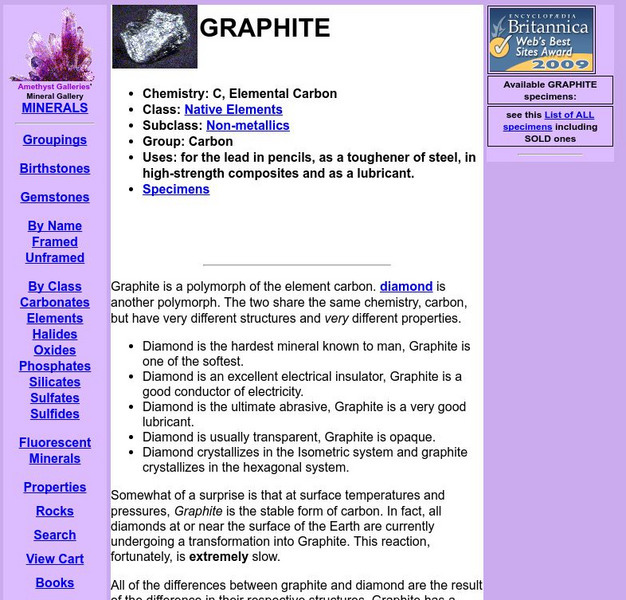Curated OER
Mixtures
For this chemistry worksheet, students use the clues given at the bottom of the sheet to complete the crossword puzzle on mixtures. There are 18 clues to solve on the sheet.
Curated OER
"I, Robot"
Students read stories from a robot journal. In this robot lesson students complete definitions and several activities, including a short essay.
Michigan State University
Michigan State University: Cluster Science Collaboration: Use of Carbon Nanotubes in Space
A very complete overview of research into carbon nanotubes and a description of what they are, how to make them, and their potential uses.
New York Times
New York Times: Cyber Times: Next Electronics Breakthrough: Power Packed Carbon Atoms
An excellent overview of the field of carbon nanotubes. Includes a summary of the discovery of fullerenes. Also, the potential use of nanotubes as semiconductors. From an article written in 1997.
University of Pennsylvania
University of Pennsylvania: Solid State Chemistry: Describing Crystalline Solids
This site contains in-depth information on crystalline solids. Includes basic concepts, pictures, learning graphs, and useful tools.
Concord Consortium
Concord Consortium: Molecular Workbench: Low Energy Electron Diffraction
Learn about the technique used to determine the surface structure of crystalline materials called low-energy electron diffraction in this animation.
Science and Mathematics Initiative for Learning Enhancement (SMILE)
Smile: Crystal Painting
From the Science and Mathematics Initiative for Learning Enhancement (SMILE) program. A lesson plan in which learners explore the nature and structure of a variety of naturally occurring crystals, such as quartz, fluorite, citrine,...
University of Oxford (UK)
University of Oxford: Solid State Chemistry: Defects in Solids
Learn the terms used to describe defects found in solids.
Science Education Resource Center at Carleton College
Serc: Growing Crystals Physical and Chemical Changes
Students conduct a controlled experiment resulting in the growth of salt crystals. They will use their skills of observation to document what goes into the experiment and what comes out, and what they have learned of physical and...
Science Education Resource Center at Carleton College
Serc: Growing & Observing Crystals
In this investigation, students will grow their own crystals changing one variable, as compared to the control crystals, in order to determine the best environment and conditions to grow the best, largest crystals.
National Institute of Educational Technologies and Teacher Training (Spain)
Ministerio De Educacion: Cristalizacion Y Ambientes Petrogeneticos
This unit covers the crystalline matter and its properties. It includes 13 interactive activities.
Upper Canada District School Board
Tom Stretton's Advanced Placement Chemistry: Liquids and Solids
Take on this self-guided advanced level e-text, and learn about the chemical and physical structure of liquids and solids.
Michael Blaber, PhD
Florida State University: Intermolecular Forces: Structures of Solids
Article from Michael Blaber and Florida State University. Amorphous and crystalline solids are compared and contrasted. The unit cell arrangements and the packing of unit cells into crystalline solids is explained and colorfully...
Other
University of Siegen: Enthalpy of Solution
This resource provides a physical reaction. Hydrous and anhydrous calcium chloride react with water to produce physical exothermic and endothermic reactions.
Other
Beautiful Chemistry: Beautiful Structures: Crystals of Nanocrystals
A display of crystals of nanocrystals allows students to study the inner structure and components of these structures. Being able to precisely control the shape and size of nanocrystals and understand their self-assembly process might...
Other
Beautiful Chemistry: Beautiful Structures: Quasicrystals
An interactive display of quasicrystals allows students to study the inner components and molecular make-up of these structures. Since the discovery of quasicrystals, a lot of efforts have been put on finding the locations of atoms...
Other
Beautiful Chemistry: Beautiful Structures: Liquid Crystals
With this interactive activity, see how the molecules inside a liquid crystal exhibit some degree of order. Based on the nature of ordering, liquid crystals can be classified into several phases. Four are shown here.
National High Magnetic Field Laboratory
Magnet Academy: Mag Lab: Image Furnace
Scientists use image furnaces to grow crystals at very high temperatures. A built-in camera allows them to observe in action a delicate process that is equal parts art and science.
Jewelry Central
Jewelry Central: Moonstone
An article on a commercial site describing the physical characteristics of this gemstone, along with its historical and metaphysical properties.
CK-12 Foundation
Ck 12: Physical Science: Solids
[Free Registration/Login may be required to access all resource tools.] Properties of solid matter and comparison of different types of solids.
Amethyst Galleries
Native Elements Class: Graphite
Description of graphite and its basic properties. Also a comparison to diamond and how they differ.
Peter F.J. Harris
A Carbon Nanotube Page
This site is an excellent, higher level, introduction to nanotubes and how they might be used.
Davidson College
Davidson College: Network Solids: Crystalline Solids
Explains the differences between ionic, molecular, metallic, and network crystalline solids. Displays structures for diamond, graphite, fullerene, and silica, accompanied by questions about their chemical bonding. Electron density plots...
Florida State University
Florida State University: Molecular Expressions: Making Crystals
Students will work in groups to grow crystals in different conditions, and then make conclusions about how and why crystals form. A detailed procedure and materials list, follow-up questions, and a teacher's guide that contains extension...




